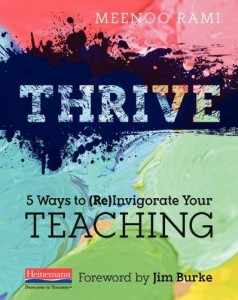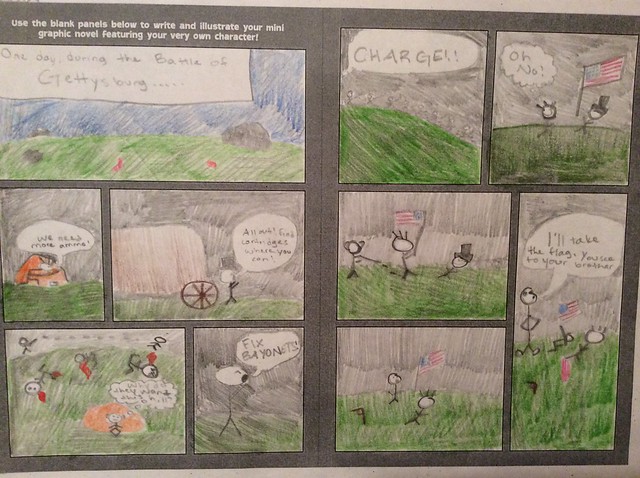(Note from Kevin: A few years ago, I was a reviewer for The Graphic Classroom. I really enjoyed the way we look at graphic novels with a lens towards the classroom. The site got taken over by another site, and then … I guess the owner of The Graphic Classroom stopped doing what he was doing. Which is fine. But I still had some reviews “sitting in the can” so I am finally digging them out to share out here.)

Story Summary: After reading ESCAPE TO GOLD MOUNTAIN, David H. T. Wong’s account of 100 years of Chinese immigration to North America, I came away from the story feeling disgusted with so many things. First and foremost, I was struck by the level of discrimination and racism that the Chinese have encountered over the years as they left their home to try to build a better life, only to encounter violent racism and political hurdles in the United States and Canada. This is the rhetorical argument that Wong makes in ESCAPE TO GOLD MOUNTAIN as he traces a family’s descendants over the years as the lure of Gold Mountain (which is what the Chinese families called North America) looms large for poor families in China. However, I was also unsettled by the way Wong demonizes just about every white person we meet in the story, except for the periodic politician calling unsuccessfully for compassion in the face of stiff immigration policies aimed at the Chinese. Still, from the building of railroads through the labor of Chinese workers suffering under horrible conditions to the creation of Chinatown slums to the outright violence in some places against defenseless Chinese families, the story told here should ignite indignation in all of us. ESCAPE TO GOLD MOUNTAIN ends with a note of apology, from the governments of both America and Canada for the ways that Chinese immigrants were treated in the 1800s and early 1900s. Wong’s graphic story of the Chinese coming to North America opens a page in the history books that all too often gets forgotten because it puts countries in a bad light. Wong’s story reminds all of us that we need to learn from this history, and find a way to create a better future free from discrimination and racism that lines so much of the past.
Art Review: I can’t say I am a big fan of the art here in this book. The simple line drawings lack the kind of complexity and uniqueness in art that would really bring the stories of the family alive to the reader. All too often, the drawings lack depth and clarity, which unfortunately takes away from the reader’s connection to the characters that Wong is highlighting. In graphic stories like this one, the art is what first grabs a students’ attention, almost always, and I’m not quite sure how this book accomplishes that. Which is not to say that Wong is not an artist of talent. It’s just that, in my opinion, too many of the pages here don’t have the kind of vitality and detail that will keep the attention of a young reader.
More Information:
• Reading level: Ages 12 and up
• Paperback: 256 pages
• Publisher: Arsenal Pulp Press (October 30, 2012)
• Language: English
• ISBN-10: 1551524767
• ISBN-13: 978-1551524764
In the Classroom: Certainly, for any unit around immigration and racism (particularly institutional racism and government policies around immigration), ESCAPE TO GOLD MOUNTAIN has a lot of potential value and would add nicely to textbook stories about the Chinese coming to North America for a better life and about immigration itself. As I was reading the book, I could not help but draw some parallels between what I know about other immigration waves from other countries in other time periods, including the more modern immigration debates that seem to center on Hispanic immigrants. History repeats itself, in some ways. But the Chinese endured more overt violence and hurdles than one can even fathom, and still they remain central to the American Dream of a better life. Wong’s story is an important one that needs to be remembered, and not repeated.
My Recommendation: I would recommend ESCAPE TO GOLD MOUNTAIN for an upper level high school or university class as a companion text for studies around immigration and racism. There are scenes of violence, and death, in this graphic novel, as Wong does not hold back his punches in telling the story.
Peace (in the book),
Kevin
 My latest post over at MiddleWeb focuses in on Meeno Rami’s new book, Thrive. Reading her book about finding ways to stay invigorated and connected to teaching young people, even in the face of difficult days and situations, reminded me of a book that I used to read every summer when I began teaching. Sometimes, we need touchstone texts. Rami’s book is one of those.
My latest post over at MiddleWeb focuses in on Meeno Rami’s new book, Thrive. Reading her book about finding ways to stay invigorated and connected to teaching young people, even in the face of difficult days and situations, reminded me of a book that I used to read every summer when I began teaching. Sometimes, we need touchstone texts. Rami’s book is one of those. I am a big fan of
I am a big fan of  These eight elements become the threads of Belshaw’s analysis throughout the book, and I found these anchors to be useful as discussion pieces and reflective points in my role as a teacher. It certainly moves us beyond the harmful dichotomy of the Digital Native/Immigrant idea.
These eight elements become the threads of Belshaw’s analysis throughout the book, and I found these anchors to be useful as discussion pieces and reflective points in my role as a teacher. It certainly moves us beyond the harmful dichotomy of the Digital Native/Immigrant idea.



